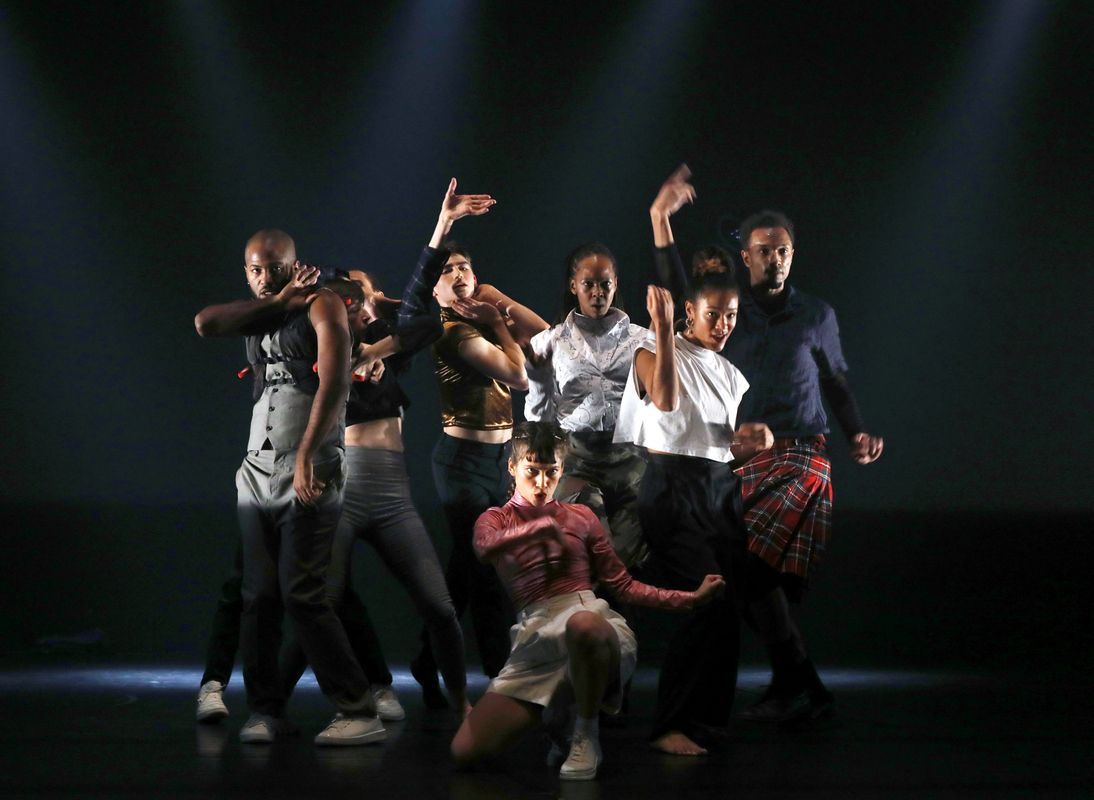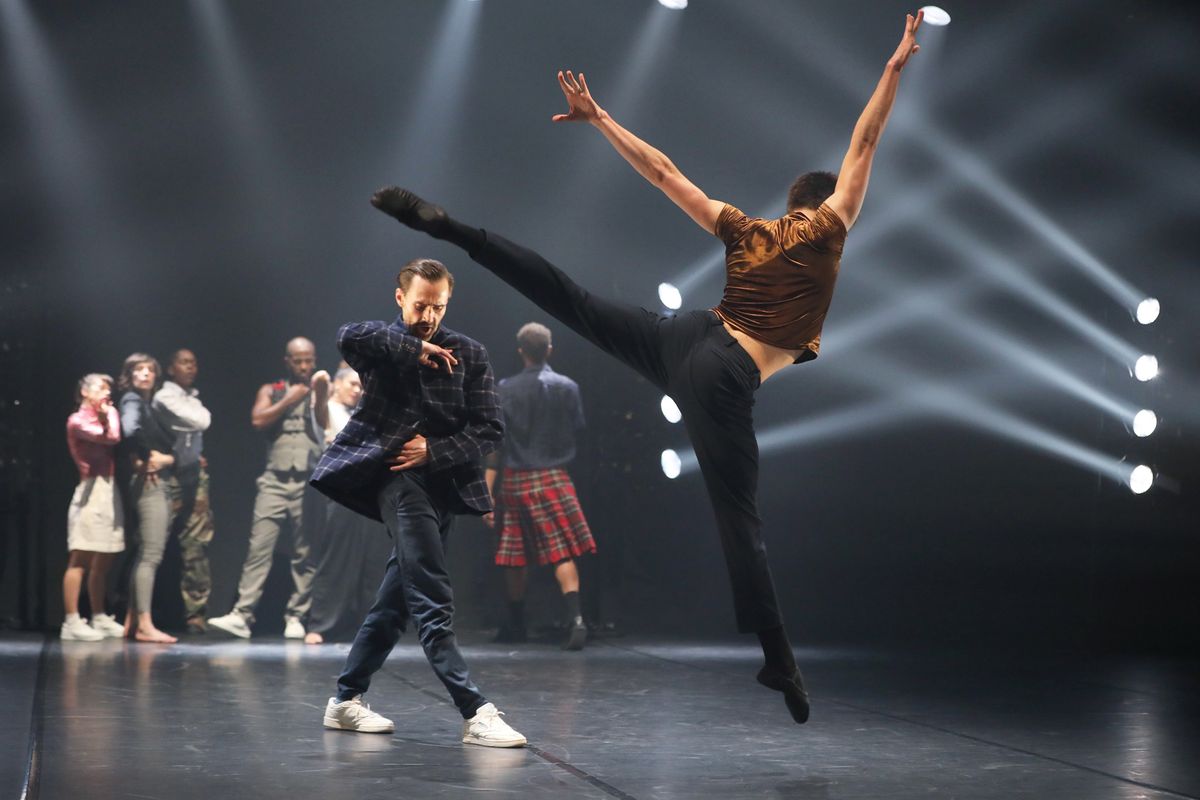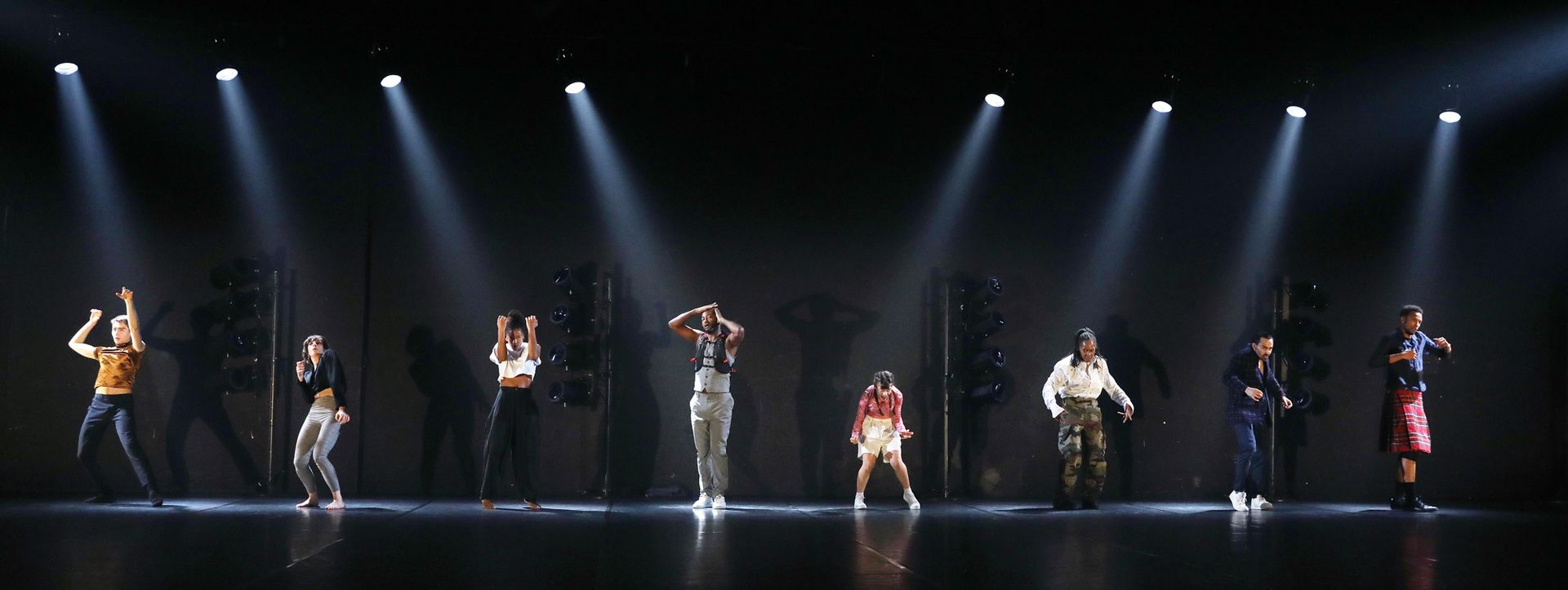Anne Nguyen's Compagnie par Terre is such a company. She previously performed in the Holland Festival. Now she comes to Amare with À mon bel amour, a performance in which eclectic dance forms such as voguing and waacking take center stage. And if you're not quite sure what to expect, read on.
À mon bel amour questions our perception of the individual, the couple and the collective by exploring different conceits about identity and beauty.
Eight dancers, four men and four women, toy nonchalantly with the poses they strike with their bodies and the symbolism of their dances to assert their identity and challenge the limits of our gaze. The gesture and purpose of the eight virtuoso dancers reflect different cultural references, different archetypes, different perceptions of the self and of others. From classical ballet to voguing, krumping, popping, contemporary dance and waacking, their dance cultures and on-stage movements allude to the fashion show, or photographic or cinematographic representation, the clubbing scene, the tradition of theatre, or to society's trappings, thereby presenting manifold ways of approaching the audience. In À mon bel amour, everything is symbolic, not just dance movements and posture, but also appearances and clothing. Daring to show off, be flirtatious, assertive, dominating, to cock a snoop, to show love, they transcend themselves in order to exist. Like parading animals, the eight dancers advance towards us tirelessly, alone, in pairs, or collectively. In a world where we struggle to agree on values, can we arrive at a consensus about the concept of beauty?
Social networks and Noah's Ark
À mon bel amour is also a metaphor for the social networks in the sense that these are platforms for the glorification of narcissism. Moving towards us in a cyclical manner, alone, in pairs, or as a group, the dancers, regaled in all their finery, exhibit personalities full of contrasts and contradictions. They seek to distil trends, stand out from the crowd, win the public's approval or provoke the audience, reinvent themselves, always hoping that its gaze will offer them freedom and prove to them they are in some way exceptional in character.
What could the boarding of Noah's Ark symbolize? Set against the urgency of climate change and the conquest of space, how could we sum up mankind? If we were invited to climb aboard the Ark, who would we like to see alongside us? What kind of place would we reserve for others? How would we take leave of our contemporaries? If this ultimate farewell procession were really to take place, I would imagine it would be broadcast live on all TV channels, on the Internet and the social networks. But perhaps it has already begun.
Types of dance in À mon bel amour
The performance combines various types of modern and classic dance. Some resemble each other or build on each other, but in the end it’s all dance. Below is a description of the types of dance that Nguyen deliberately incorporated in the performance, and why. This way you can pick out the different types of dance during the performance.
Waacking
Waacking is a type of street dance that emerged in the LGBT clubs of Los Angeles during the disco era of the 1970s. Also known as Punking, this type of dance was originally embraced mainly by the Afro-American and Latino communities. Distinctive features of this dance style are the rotating arm movements, poses, and the emphasis on expressiveness.
Breakdance, rap, graffiti and DJs
Breakdance, rap, graffiti and DJs: these are the four basic elements of hip hop. The dance itself is referred to as breakdancing. This type of dance emerged in the late 1970s and early 80s in the deprived Afro-American districts of New York City, when DJs started using turntables and mixers to endlessly repeat a song break (from which the name derives). Breakdance is how you dance to this new music style, which was first referred to as electro and subsequently developed into hip hop and rap. ‘Battles’ are a typical feature of Breakdance.
Vogue
Vogue is another type of dance that emerged in the late 1970s and early 80s, building on a type of dance known as performance that originated in New York’s Harlem district in the 1930s. It’s a type of dance that imitates the various poses of the models featured on the cover of Vogue magazine – hence the name. This type of dance stands out for the angular and stylised movements of arms and legs, and the fragmented strut across an imaginary catwalk. More extreme, yoga-like poses are also used. The elegant transitions from one pose to the next creates the impression of a fluid body.
Classic ballet
Classic ballet combines choreography with musical composition and the visual design of decors and costumes. In narrative ballet, the plot is described in a libretto. This way, ballet incorporates several art disciplines. The term ‘ballet’ also refers to a particular dance style and technique. Ballet emerged during the Italian Renaissance and was developed further at the French court. It became a separate form of music theatre in the eighteenth century. The basic dance steps of classic ballet derive from this period.
Modern dance
Unlike classic ballet, modern dance lacks any kind of prescribed movements. Modern dance is a container concept for various highly individual dance techniques from the first half of the twentieth century. Today the preferred term is ‘contemporary dance’.
Krumping
Krumping, or Krump, is a type of dance derived from hip hop, but with a spiritual dimension. Krump dancers push themselves to extremes, resulting in a kind of trance in which the dancer’s muscles and mind take over the body. Krump emerged in Los Angeles in 2000 (created by Tight Eyez) through a church community’s attempt to keep kids off the street and to provide them with an activity to blow off steam and to channel their aggression and other feelings.
Popping
Popping emerged in the funk scene in the 1970s. Popping is based on a technique of rapidly tensing and relaxing your muscles, with the effect of seeing a particular type of movement ripple across the dancer’s body, such as a shock wave or a robot-like gesture. This movement can be referred to as a pop or a hit or a wave. Michael Jackson excelled at this technique.
Hip Hop Dance
Hip hop dance refers to the street dance styles set to hip hop music, or that are part of the hip hop culture. A wide range of styles that emerged in the 1970s have influenced this type of dance. Hip hop became mainstream thanks to various television shows in the 1980s, 90s and 00s. Despite becoming mainstream entertainment, hip hop remains a strong presence in urban areas where it continues to develop further. This has resulted in various derivatives such as Memphis jookin, turfing, jerkin' and krump.






